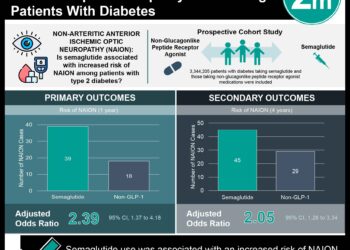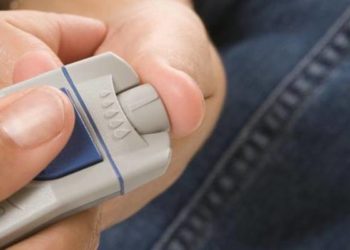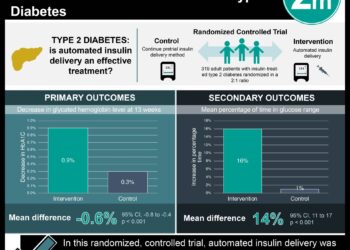New peptide-modified hydrogel developed for diabetic wound healing [PreClinical]
1. The peptide QHREDGS protected human epithelial cells from oxidative stress and promoted cell migration and survival.
2. When a hydrogel containing this peptide was given to diabetic mice, they showed faster and improved wound healing.
Evidence Rating Level: 1 (Excellent)
Study Rundown: Patients with diabetes have poorer wound healing due to persistent inflammation and other molecular alterations in the wound environment that suppress optimal healing and epithelial regeneration. One peptide, QHREDGS, was previously found to promote the attachment and survival of cardiac muscle cells as well as other factors involved in cardiac recovery from injury. Because of its function in repairing heart cells, it was hypothesized that this peptide can similarly repair keratinocytes.
To test the function of this peptide, it was applied to a film containing diabetic human epidermal keratinocytes (DHEKs). In the presence of this peptide, DHEKs were able to survive under high amounts of oxidative stress, a feature seen in the environment of diabetic wounds, potentially through the activation of the Akt/MAPK pathway. In addition, the cells exposed to the peptide showed increased migration. The effect of this peptide was then tested in vivo in a diabetic mouse model. This peptide was applied to a hydrogel that was then applied to wounds on mice. Mice exposed to this peptide demonstrated smaller wounds after 2 weeks, indicating faster wound healing. Mice given this peptide were more likely to have closed wounds, a feature not consistently seen in other mice. Finally, this peptide was discovered to increase blood vessel density in the wound area, an aspect of regeneration that helps accelerate wound healing.
Currently, treatments for diabetic patients with ulcers and other wounds are needed to help prevent adverse circumstances such as amputation. This peptide shows promise in improving wound healing in diabetics, but still needs to be tested on humans to determine whether it will function similarly.
Click to read the study in PNAS
Relevant Reading: QHREDGS enhances tube formation, metabolism and survival of endothelial cells in collagen-chitosan hydrogels
In-Depth [animal study]: After being treated with 500 µM H2O2 for 2 hours to mimic an environment of high oxidative stress, human epidermal keratinocytes (HEKs) on chitosan-collagen films with QHREDGS showed increased viability as the peptide dose increased (p<0.05). This increase corresponded with increased activation of the Akt/MAPK pathway (p<0.05). Next, using a cell migration assay, the ability of HEKs to migrate in response to the appropriate concentration of calcium was assessed. The peptide led to an increase in HEK migration as well as the formation of E-cadherin to promote cell-to-cell adhesion.
These same aspects of wound healing were tested in DHEKs to test whether this peptide had similar effects in cells from diabetic patients. Comparable results were obtained with a significant increase in survival upon exposure to 2mM H2O2, activation of the Akt/MAPK pathway, and enhanced migration in the presence of calcium.
This peptide was then tested in vivo in a leptin-receptor deficient mouse model of diabetes. Eight millimeter biopsy punches were used in these mice to create a wound, and low (2.2 nmol) and high (5.9 nmol) peptide concentrations were tested in the chitosan-collagen hydrogels. Following the application of this peptide, there were significantly smaller wounds in these mice on day 14 (p<0.05). The high peptide hydrogels were found to almost fully close the wound in animals, with an increase of 8% of the wound area that was closed. These mice also showed significant changes in the epithelial gap and thickness of the wounds (p<0.05).
Image: PD
©2016 2 Minute Medicine, Inc. All rights reserved. No works may be reproduced without expressed written consent from 2 Minute Medicine, Inc. Inquire about licensing here. No article should be construed as medical advice and is not intended as such by the authors or by 2 Minute Medicine, Inc.







